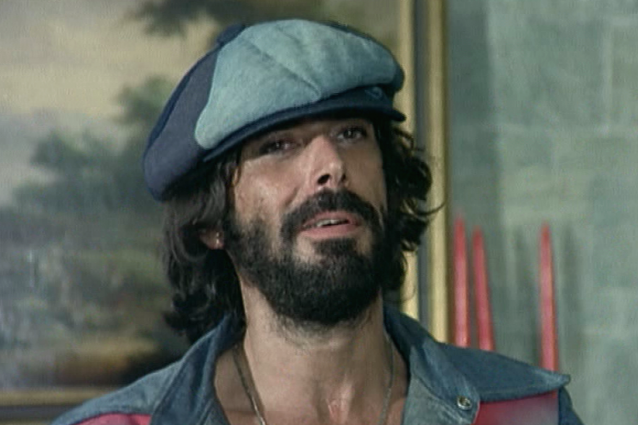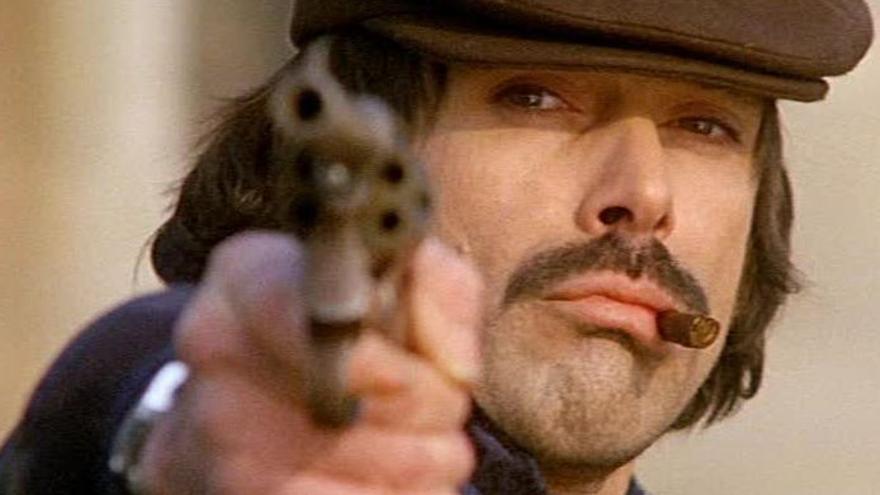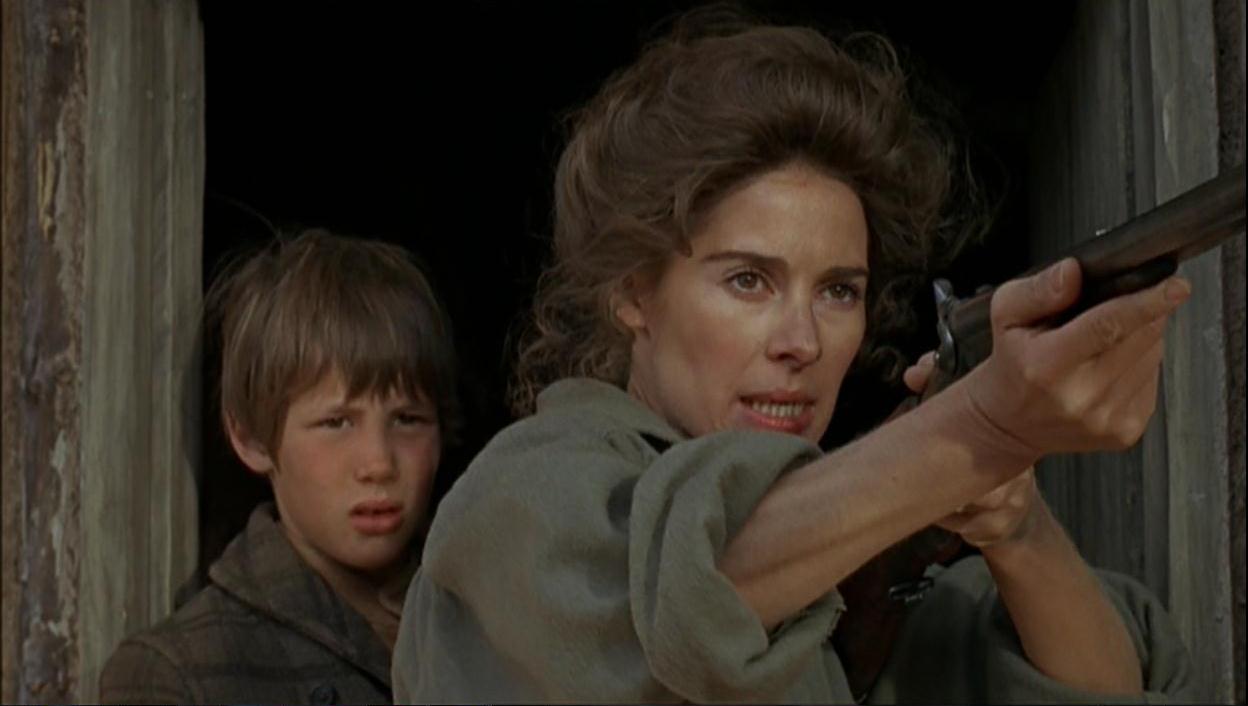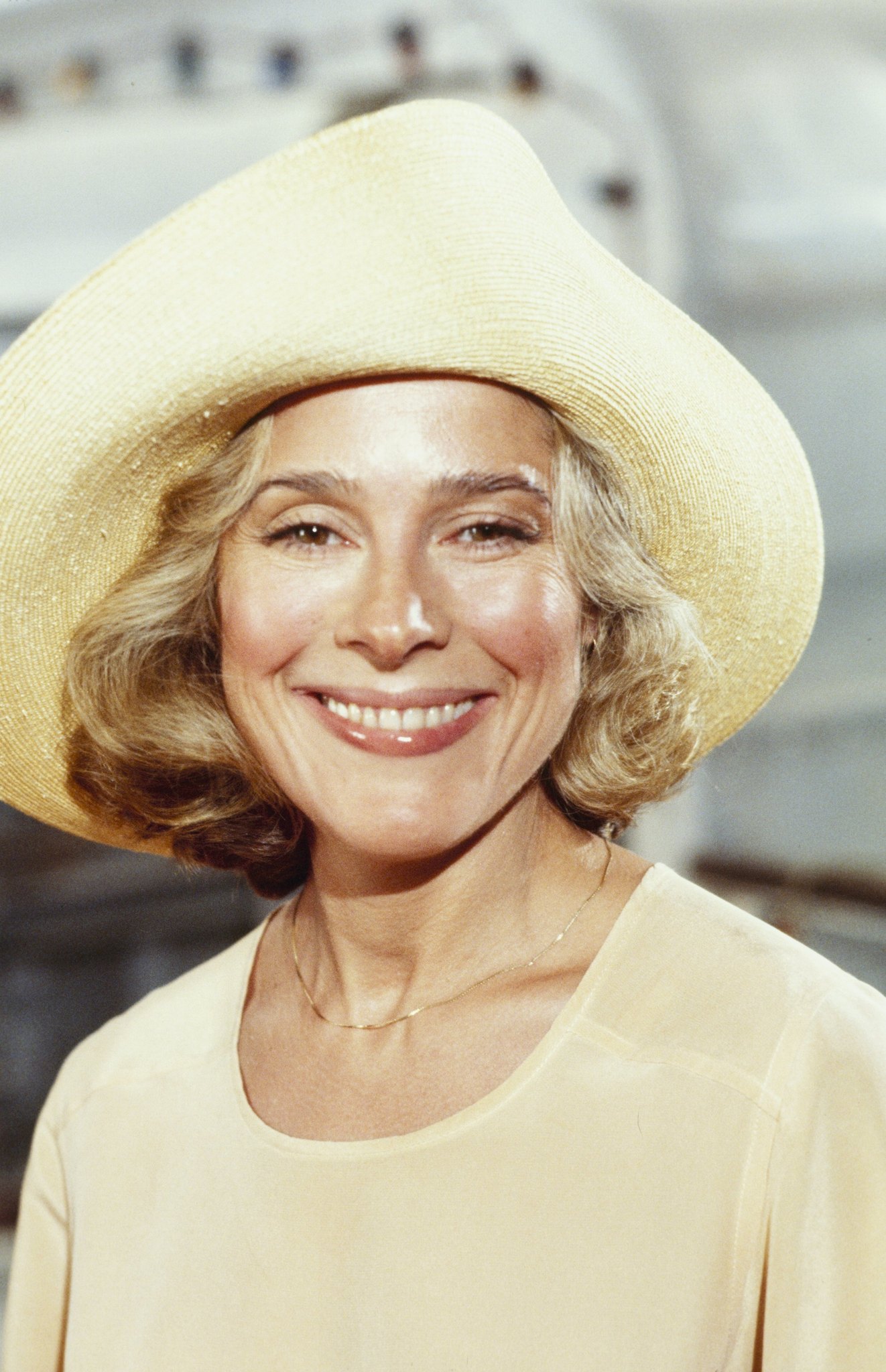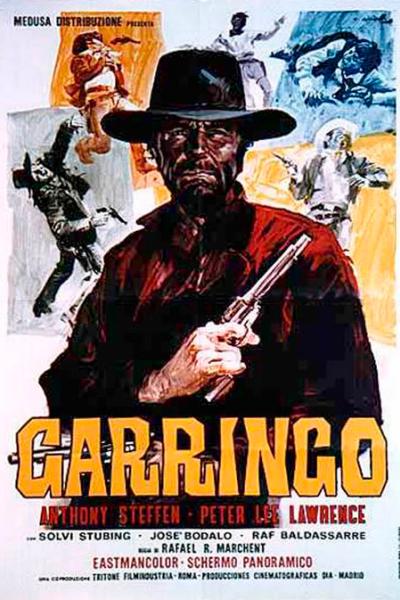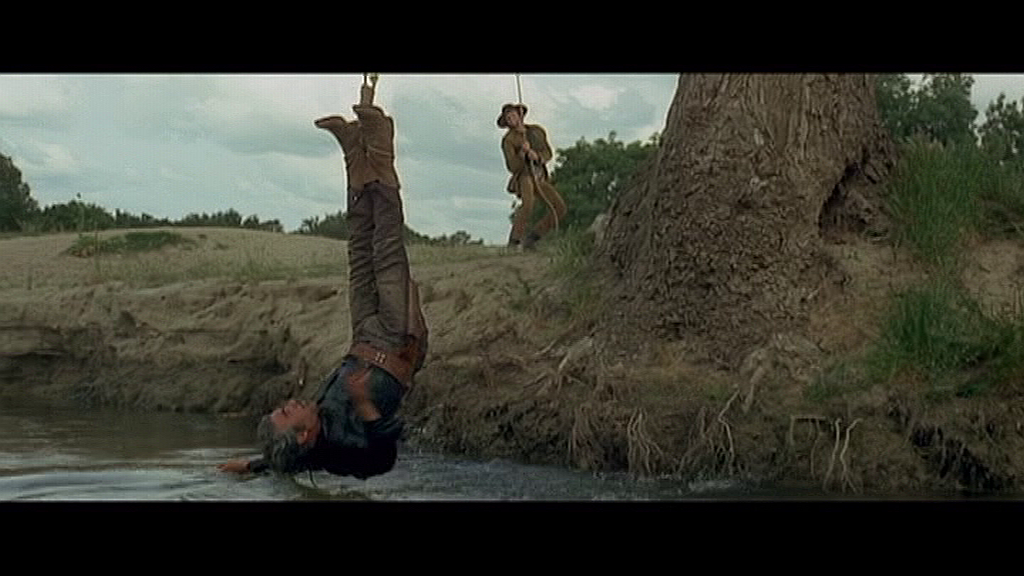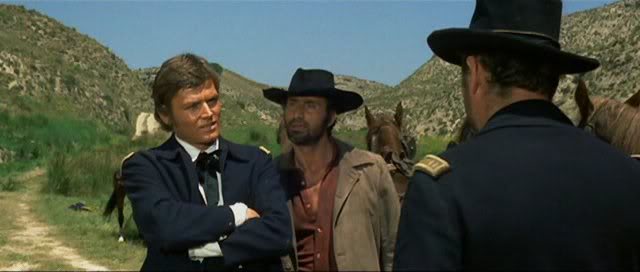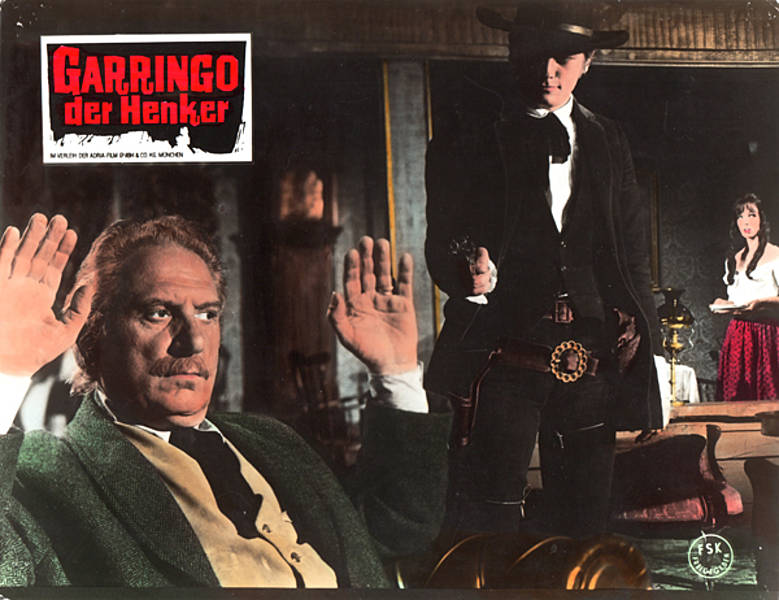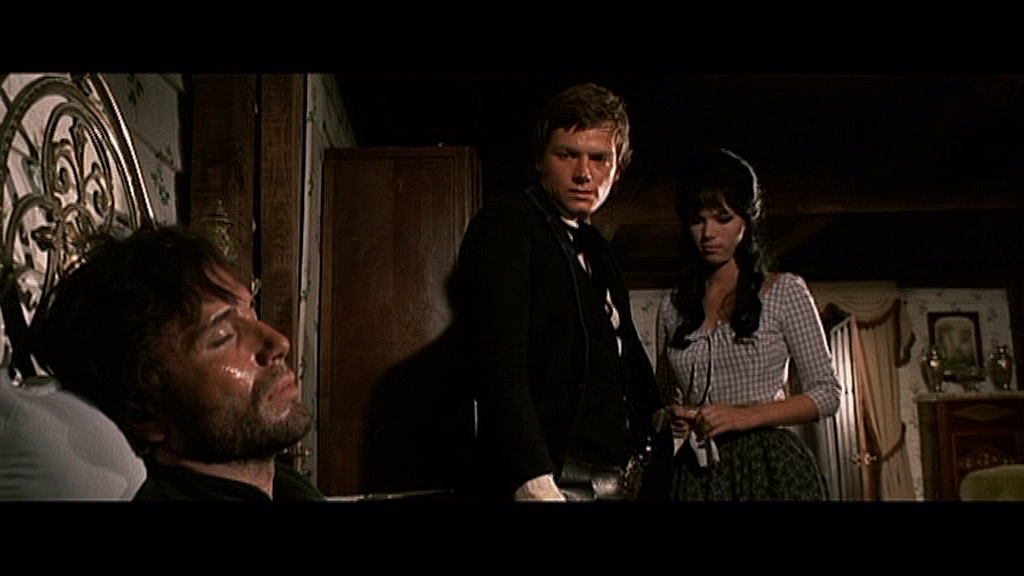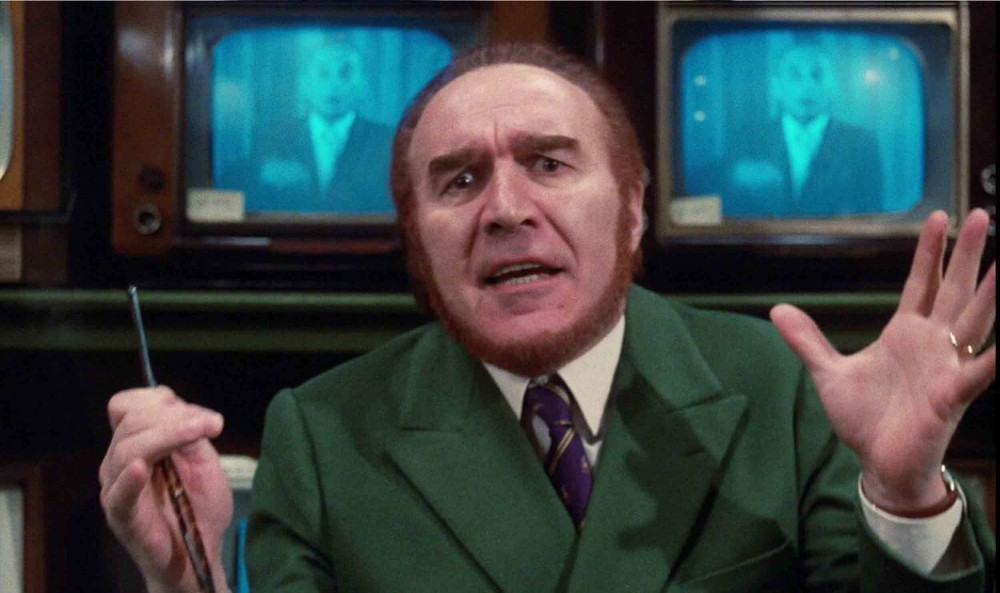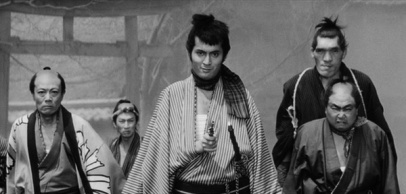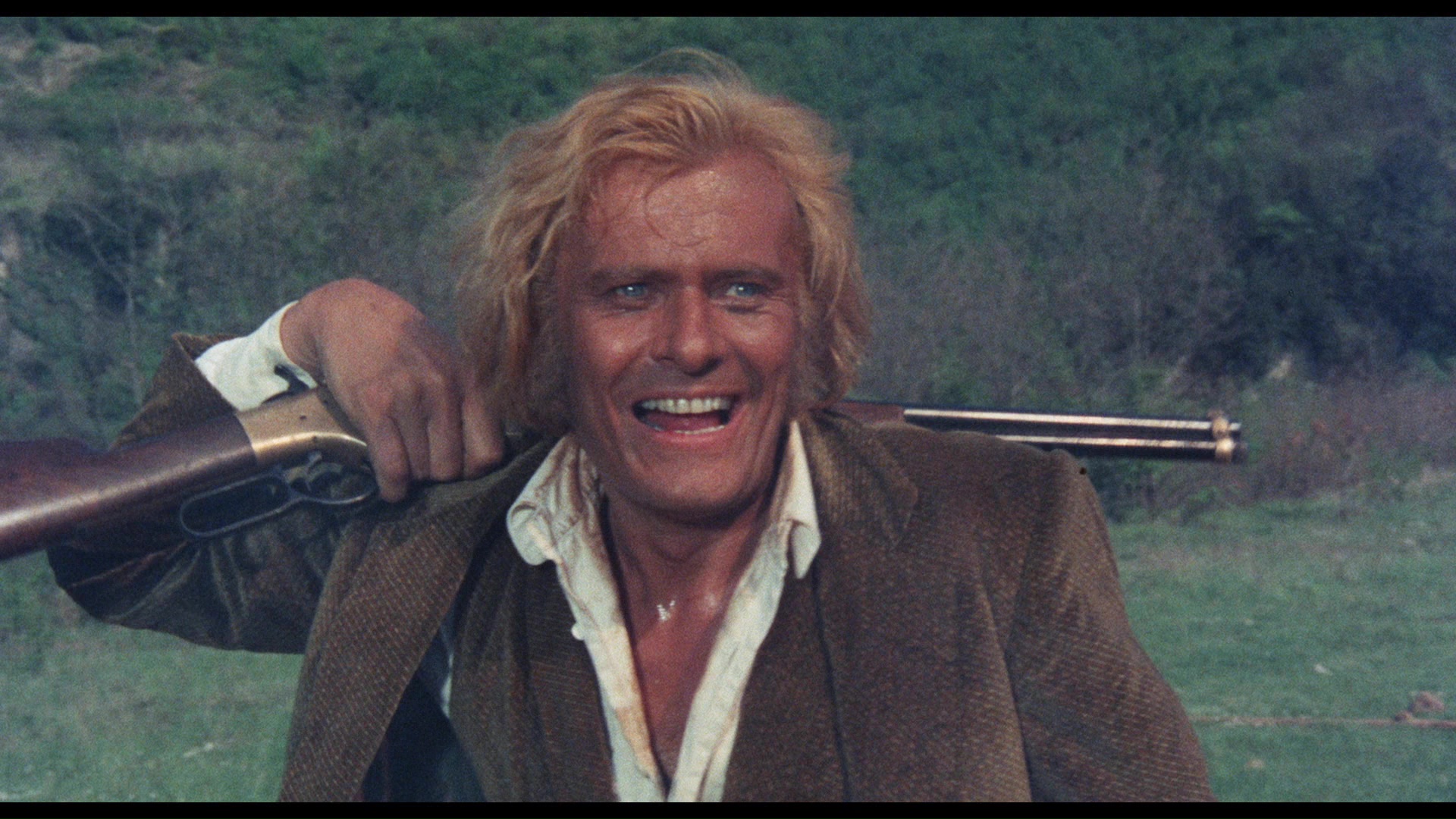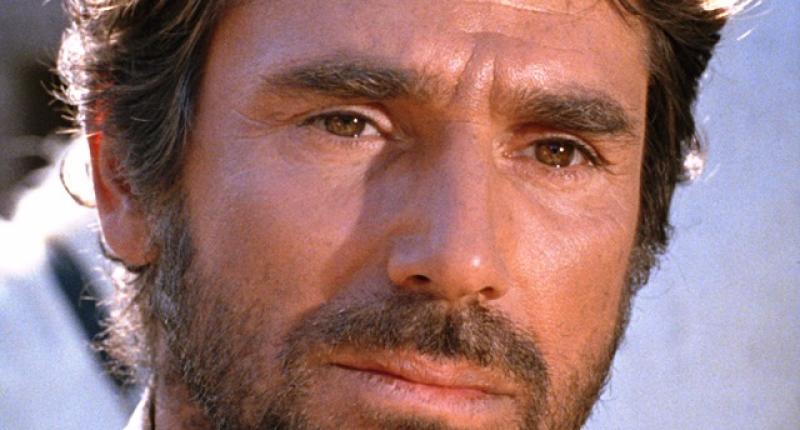Great Performances by American Actors in European Films
by Tony Nash
(All Opinions are of the writer’s alone)
While many fans may make the assumption American actors who went to Europe to make films was a step backwards as their voices were often dubbed due to the actors not speaking the language of that country, this is hardly true. American actors appearing in films overseas had two benefits: for the established star, working in Europe meant the talents of directors, actors/actresses, screenwriters, etc. who wouldn’t normally get noticed in the States, meant for US distribution and a chance to get international recognition, and for established actors struggling in the wake of changing tastes, work in Europe meant a second career and second chance at stardom. For the up-in-comer having trouble getting through the door in Hollywood, a career in Europe offered a chance for recognition and star statues, and far more offers than Hollywood would give. Now there are many great performances out there, in A grade “important” films and B grade genre films, but the roles discussed here will reflect the noted stand-outs.

Burt Lancaster as Prince Don Fabrizio Corbera of Salina (dubbed by Corrado Gaipa) in Il Gattopardo (The Leopard) (1963) ***** – Directed by Luchino Visconti, Written by Suso Ceechi D’Amico, Pasquale Festa Campanile, Enrico Medioli, Massimo Franciosa, & Luchino Visconti, from the novel by Giuseppe Tomasi di Lampedusa
Burt Lancaster, who was mostly known as a matinée idol at the time, gives a powerhouse and touching performance as the aging Prince of Sicily who slowly watches his country go from Monarchy to Democracy. Lancaster only occasionally got to play roles with depth like with Come Back, Sheba, From Here to Eternity, and Elmer Gantry, and was often obliged to take standard role types. With Il Gattopardo, he’d hoped to break away from his leading man image, and show how talented an actor he was. Initially he was felt miscast, even by the director Visconti, but he ended up perfectly embodying the greatness of the Prince, physically and symbolically, as exactly Visconti envisioned when he was co-writing the script. The film flopped originally at the box-office as gaudy, and actually hampered Lancaster’s goal for more serious work, but years later critics and viewers alike see this as one of Lancaster’s best performances. His mixing stoic majesty with tender vulnerability, showing a man keeping his family’s spirits up in the wake of change in public and maintaining a sense of dignity and authority, while inside he is sad, scared, and uncertain of his place in a world without royalty in charge, is a real challenge he pulls off magnificently. A highly underrated actor who didn’t get his rightful accolades until almost too late, but still is seen as a rightful icon of the film industry.

Charles Bronson as Harmonica (dubbed by Giuseppe Rinaldi) in C’era una Volta il West (Once Upon a Time in the West) (1968) PG-13 ***** – Directed by: Sergio Leone, Written by: Sergio Donati & Sergio Leone, from an idea by Bernardo Bertolucci, Dario Argento, & Sergio Leone
Charles Bronson gives one of the more underscored performances of his career in Sergio Leone’s loving homage to the American Old West. Bronson truly is The Man with No Name, as he never says what his name is; Jason Robards character Cheyenne finally coining him “Harmonica”. With a quiet demeanor, and a face that looked like it had gone through much hardships and tribulations, Bronson was able to affect a man haunted by a long ago trauma that left him a shell, only the sounds of a musical instrument giving audiences any hint to a small bit of who he really is. By only using glances, facial expressions, and body movements, Bronson was able to convey so much more to his character than any amount of dialogue could. Leone had a knack for choosing actors who didn’t need a lot of words to let the audience know what they’re thinking and what they’re about to do.
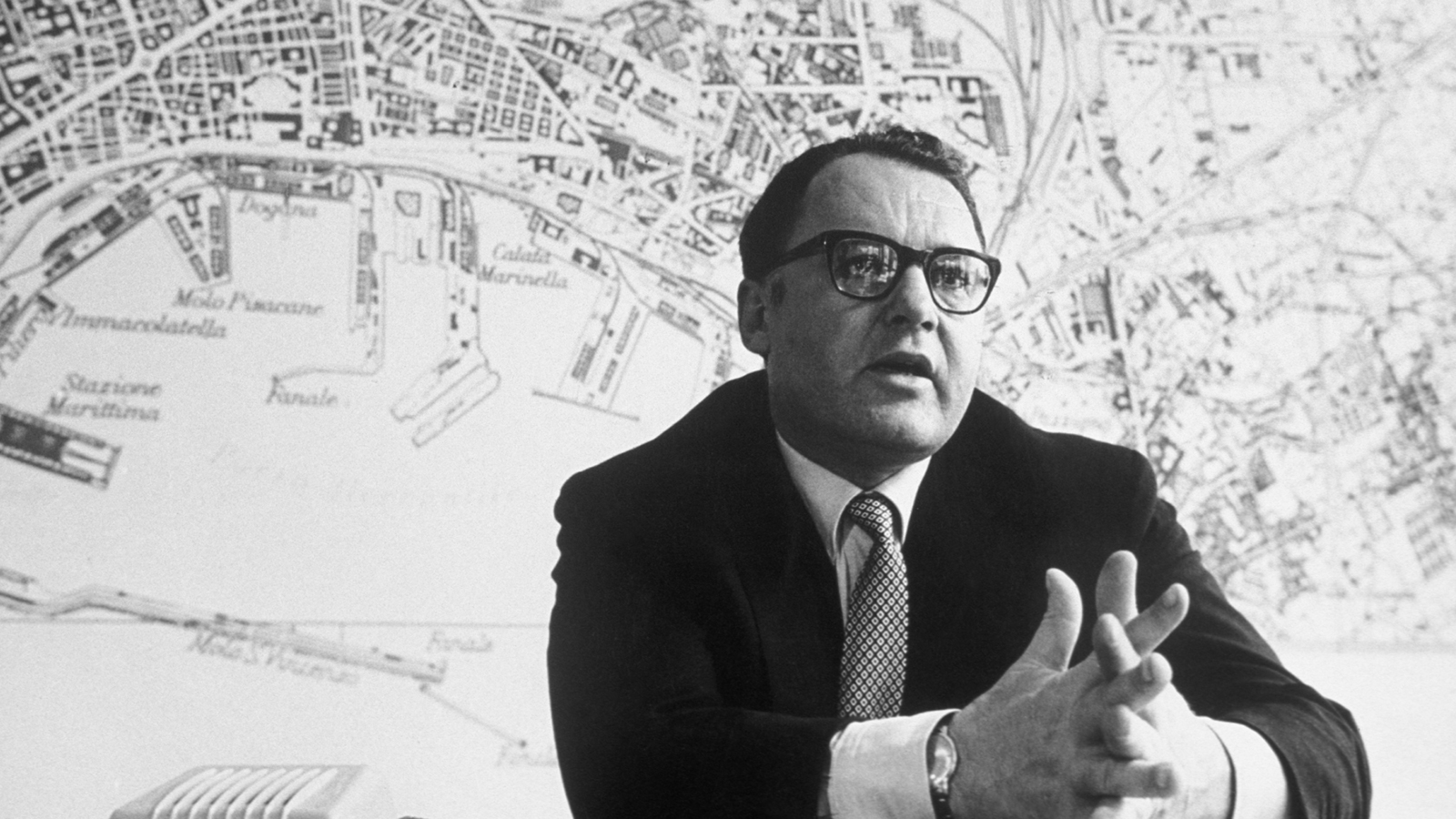
Rod Steiger as Edoardo Nottola (dubbed by Aldo Giuffre) in Le Mani Sulla Citta (Hands Over the City) (1963) ***** – Directed by Francesco Rosi, Written by Francesco Rosi, Raffaele La Capria, Enzo Provenzale, & Enzo Forcella
Rod Steiger is at his heaviest and grittiest best in a film about the battle between a building contractor and a politician looking to win an election in the wake of a building collapse in Naples. What makes Steiger’s role unique is that his character, in spite of being greedy and opportunistic, is actually quite likeable. While money and being elected commissioner of construction in the upcoming elections is a goal he won’t be denied of, Nottola shows he’s a loving and caring father, a stout Roman Catholic, and does care about the future and well-being of the Province. His character is an interesting shade of grey, not black and white as most people would expect. Even stranger is that the intended “hero” of the film, De Vita (played a real politician ironically enough) is quite unlikable in his not thinking past the here and now of the film, and what his decisions might mean later. That Steiger plays his character as a real person in a film featuring only three actors (himself included) in a cast of non-professionals (a trait of filmmaker Francesco Rosi, who wanted his films to feel as authentic and relatable as possible) is a real showcase of talent and ability.
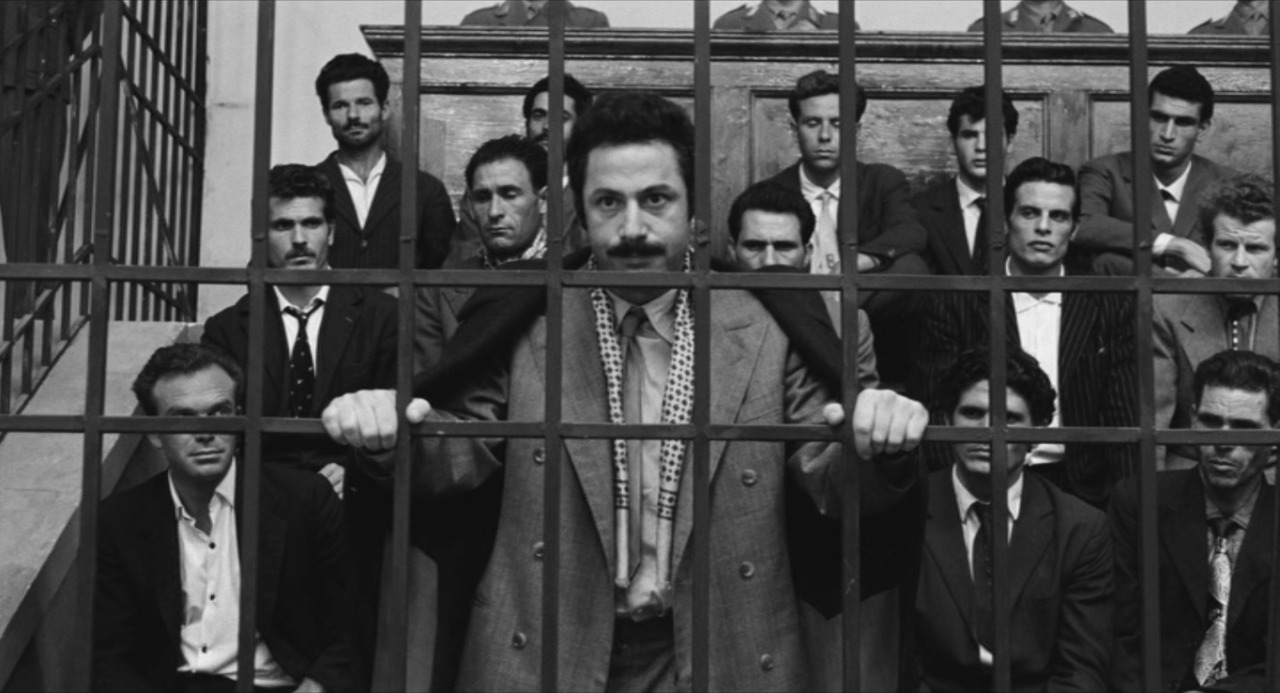
Frank Wolff as Gaspare Pisciotta (dubbed by Turi Ferro) in Salvatore Giuliano (1961) ***** – Directed by Francesco Rosi, Written by Suso Ceechi D’Amico, Enzo Provenzale, Francesco Rosi, & Franco Solinas
Struggling actor Frank Wolff gives an impassioned and equally restrained performance as Gaspare Pisciotta, the ally turned murderer of his cousin Salvatore Giuliano. Wolff, one of the earliest graduates of UCLA’s acting curriculum, had been shooting the film Atlas for his friend Roger Corman, when filmmaker Francesco Rosi offered him the role in his production of the infamous Sicilian outlaw. Rosi, who was known for casting non-professional actors for the effect of authenticity, realized the role of Pisciotta was a complex one, something a non-professional couldn’t convey, and since Wolff was eager to appear in productions with a little more depth, but not necessarily a big paycheck, he was hired on the spot. The duplicitous, tortured, and conflicted nature of Pisciotta is displayed beautifully from Wolff, who shows great talent that the UCLA training flushed out well. Being unknown at the time allowed him to blend in well with the non-professional performers, and not take away from the realism Rosi wanted to visualize. While not the caliber of Laurence Olivier and many others, Wolff was a dedicated performer who always gave his best, even when the role was very beneath the great talent he possessed.

Lee Van Cleef as Jonathan “Colorado” Corbett (dubbed by Renato Turi) in La Resi Dei Conti (The Settling of Accounts/The Big Gundown) (1966) ***** – Directed by Sergio Sollima, Written by: Sergio Donati & Sergio Sollima, from a story by Franco Solinas & Fernando Morandi
Lee Van Cleef is a wonderful and genuine surprise as the lawman with a conscious in Sergio Sollima’s entertaining and socially relevant Western. While Van Cleef wasn’t a trained actor, his naturalness and facial features allowed him to convey emotions in a way dialogue couldn’t. This ability gave the character the depth Sollima intended for him and, whether intentionally or not, showed Van Cleef as a capable character actor. Van Cleef didn’t get to do a role like this too often, and the few times he did, was very good and impressive. The character isn’t quick to draw his gun, and works out the mystery before he goes into action. Much like Charles Bronson, Van Cleef was another actor who could tell the audience much more with expressions, body and facial, than with words.

Eli Wallach as Tuco (dubbed by Carlo Romano) in Il Bouno, Il Brutto, Il Cattivo (The Good, the Bad, and the Ugly) (1966) ***** – Directed by: Sergio Leone, Written by: Agenore Incrocci (as Age), Furio Scarpelli (Scarpelli), Luciano Vincenzoni, & Sergio Leone
Eli Wallach’s sometimes comedic, sometimes serious, but always interesting to watch bandito is a sight to see in Sergio Leone’s classic Western. An individual who’s committed every crime in the book at least once is quite sympathetic as he’s one of the rare Leone characters to get a flushed out back-story that, while it doesn’t justify his actions or behavior, does let the audience know his criminal life wasn’t a wanton choice, but rather because he had no choice. Wallach’s ability to have the audience not hate Tuco, but not praise him either, takes a great deal of ability and skill, something Wallach showed over and over he had plenty of. One of the many early graduates of The Actor’s Studio, Wallach, like Cuban-American-Italian actor Tomas Milian, utilized his skills in genre film equally well as in more serious-minded projects. His breaking away from what Karl Malden and Marlon Brando were doing in terms of their films made him a recognizable character actor immediately and was able to gain a large variety of roles.
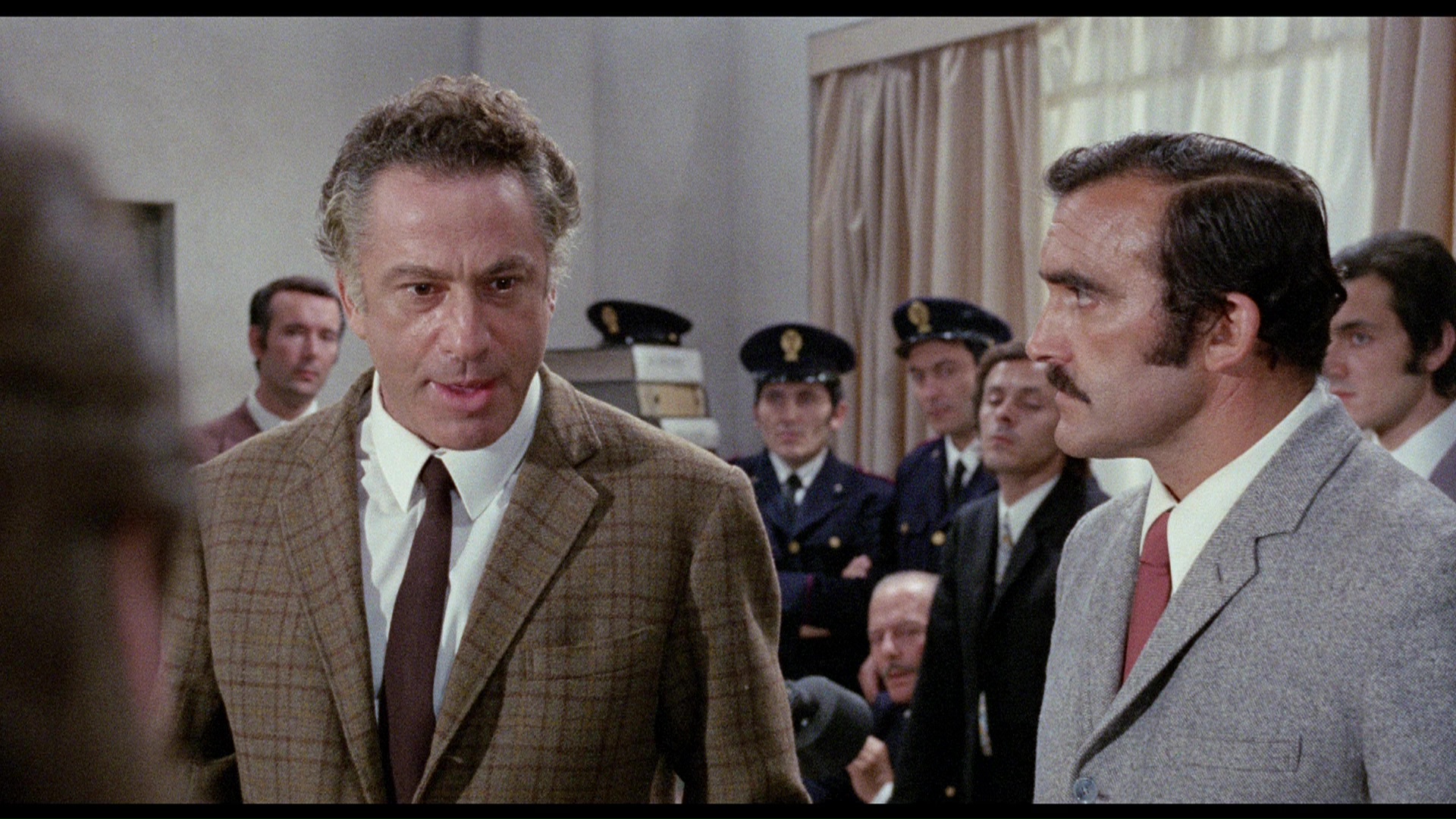
Frank Wolff as Il Commissario di Polizia (dubbed by Sergio Rossi) in Milano Calibro 9 (Caliber 9) (1972) R **** ½ – Written & Directed by: Fernando Di Leo, from a collection of stories by Giorgio Scerbanenco
In his final complete performance before his tragic suicide, Frank Wolff shines as a disillusioned Police Commissioner, who thwarts all pleas from his new assistant to crack down on the ruthless rich who take advantage of the powerless poor. Even though his role is supporting, and much of his scenes part of a secondary plotline to the main story, Wolff still excels in his part, and gives 100% with it. The part is a very animated one and Wolff puts forth numerous burst of energy as much of the scenes he was in had him in arguments with the character of his assistant, played by Luigi Pistilli. The Commissioner comes off as very dedicated, but having seen so much crime and guilty people over the years, has hardened his thought process and no one is innocent anymore. Di Leo himself said later that Wolff’s part was much larger initially, but because he and Pistilli often took the scene outside the script, much of his role was left on the cutting room floor, feeling awful it happened as Wolff floored Di Leo and the crew with those moments of fine acting.

Henry Silva as Lanzetta (dubbed by Sergio Rossi) in Il Boss (The Boss) (1973) R **** – Written & Directed by: Fernando Di Leo, from the novel by Peter McCurtin
Henry Silva goes above the norm in Fernando Di Leo’s look at the Sicilian Mafia. Silva gets to display the talent he honed in acting school to its fullest as a Mafia “buffer” who goes through conflicting emotions as a Mob War escalates between his employers and a rebellious Mafioso looking to become a kingpin. That Silva takes his character beyond the standard, and what many would consider “stereotype” of the Italian gangster, and gives depth and dimension to a role that would’ve normally been generic in other films. This depth doesn’t necessarily make audiences sympathize with the character, but it does allow for the audience to see that there is more to this individual than just what’s on the surface. The character is certainly brutal and vicious, but he shows at the same time he cares about certain people, even if he doesn’t feel he should be so close to said people. A highly underscored actor who should’ve gone further than he did.

Henry Silva as Commissario Walter Grandi (dubbed by Nando Gazzolo) in Milano Odia: La Polizia non Puo Sparare! (Almost Human) (1974) R **** – Directed by: Umberto Lenzi, Written by: Ernesto Gastaldi
In a major departure from his usual fare and casted against type, Henry Silva does really well as the police inspector in Umberto Lenzi’s well done, albeit darkly brutal, crime thriller. No one would’ve thought Henry Silva could play a cop until this film, but he excels beyond expectations in what he was a capable of as an actor. The role was originally intended for Richard Conte, who had to bow out because of a heart attack, so Silva was brought in as a last-minute replacement. Fears he couldn’t be believable in such a part were laid to rest as he succeeded in every aspect of a cop’s personality in every scene he appeared in. Ironically, Silva’s policeman comes off as more believable in the final moments of the film than Conte’s would have. Conte would’ve been the cop who’d gone bad from his morals being shattered whereas Silva comes off as a cop who sacrifices everything so someone like Tomas Milian’s character in the film doesn’t have a chance to commit another dastardly deed.

Mark Damon as George Bellow Ferguson (dubbed by Giuseppe Rinaldi) in Requiescant (Kill and Pray) (1967) *** ½ – Directed by: Carlo Lizzani, Written by: Adriano Bolzoni, Armando Crispino, Lucio Battistrada, Pier Paolo Pasolini, & Carlo Lizzani, from a story by Renato Izzo & Franco Bucceri
Mark Damon, one of the many American expatriates who found fame in Italy, is a scene stealing success in Carlo Lizzani’s one and only Western about a Puritan raised gunfighter opposing a Southern Baron racist tormenting Mexican peasants. Damon is a blast as Ferguson, the poster child for the Southern Plantation Baron elitist who hates everyone not light-skinned. Even though you hate the character, Damon’s acting abilities make viewers want to hate him, and in some cases like to hate him. This guy is so full of himself and constantly using the third person when in conversation or order giving it almost goes into the absurdly funny. Not meant to funny by any means, this flamboyance gives Ferguson the mark of a dying breed of men whose time has passed and the way of life they led is no longer viable in a new and changing world. The politics of the time had Damon having to recite lines that voiced filmmakers of the times views on the world, but ignoring the preachy messaging of the film, Damon’s lines can be seen as the ravings of a bitter, hate filled man.
Honorable Mentions

Henry Fonda as Frank (dubbed by Nando Gazzolo) in C’era una Volta il West (Once Upon a Time in the West) (1968) PG-13 ***** – Directed by: Sergio Leone, Written by: Sergio Donati & Sergio Leone, from an idea by Bernardo Bertolucci, Dario Argento, & Sergio Leone
In a casting against type that went against all conventions, Henry Fonda gives a performance of a lifetime as the sadistic/heartless gunman in Sergio Leone’s 2nd classic Western. It was a role that Hollywood would never let him repeat again, given all the saintly characters he played. Only Sergio Leone could see the menace within Fonda, and had him use his famous baby blue eyes to full effect with the coldness within. It’s only listed as an honorable mention due to how mean-spirited the character is.

Lee Van Cleef as Setenza/Angel Eyes (dubbed by Emilio Cigoli) in Il Bouno, Il Brutto, Il Cattivo (The Good, the Bad, and the Ugly) (1966) ***** – Directed by: Sergio Leone, Written by: Agenore Incrocci (as Age), Furio Scarpelli (Scarpelli), Luciano Vincenzoni, & Sergio Leone
In another surprising casting decision, Lee Van Cleef got to play the most brutal baddie of his career in Sergio Leone’s first classic Western. Van Cleef by this time was known in Italy for playing good guys who were honorable, but still had a touch of larceny. So the shock was on them when they saw Van Cleef shooting and maiming people without mercy while on the search for stolen Confederate gold. American audiences already knew of Van Cleef’s pedigree as a heavy, having played so many henchmen and big budget pictures, and main baddies in smaller budget affairs, but even they weren’t expecting the levels of meanness Leone would have Van Cleef’s character go. Van Cleef also proved his pedigree as a gentleman as one scene required him to slap a woman several times, and he insisted to Leone he wouldn’t strike her, resulting in very clever editing techniques from to make it look like it was him. This one goes to honorable mention status again due to the character being extra vicious.

Lee Van Cleef as Frank Talby (dubbed by Emilio Cigoli) in I Giorni dell’Ira (Day of Anger) (1967) **** ½ – Directed by Tonino Valeri, Written by: Ernesto Gastaldi, Tonino Valeri, & Renzo Genta, from a novel by Rolf Becker (as Ron Barker)
Lee Van Cleef once again showing he was no slouch in the acting department, in Tonino Valeri’s Western about the unlikely friendship between a hardened gunman and the local whipping boy of a town. What makes this character unique is that he’s played as the ruthless type who lets nothing stand in his way, but at the same time shows a sense of fatherly affection for the mistreated young man who’s forced to do sanitation work. This duality might prove the downfall of the gunman, but allows the audience to have genuine sympathy for the man, as he truly does show he’s not all bad. This go around showed Van Cleef had matured during his tenure in Italy, and was gaining experience, becoming adept with dialogue and character conveyance, instead of purely relying on his physical appearance and facial features, though he still uses them to great effect. This only made honorable mention due to a little bit of a gap within the storyline for the character.
(Author’s Note: I must admit I nearly got teary-eyed at the end, as I didn’t want to see Van Cleef’s character die.)
While these actors’ own voices weren’t heard on film and often times the lines they memorized differed from the original script (the context/syntax was the same, but said differently), their physical presence and on camera personalities helped the voice come across as theirs, not just something mechanical. Sometimes these performances were much better than the ones they gave in Hollywood, partly because the screenwriters gave them great material to work with, and the directors saw potential and talent that Hollywood either ignored or didn’t take full advantage of. Whatever the case, these actors were amazing and did excellent jobs overseas as well as in the States.
All images courtesy of Google.com/Google images and their respective owners
For more information:
IMDB/The Leopard
Wikipedia/The Leopard
IMDB/Once Upon A Time in the West
Wikipedia/Once Upon a Time in the West
IMDB/Hands Over the City
Wikipedia/Hands Over the City
IMDB/Salvatore Giuliano
Wikipedia/Salvatore Giuliano
IMDB/The Big Gundown
Wikipedia/The Big Gundown
IMDB/The Good, The Bad, and The Ugly
Wikipedia/The Good, The Bad, and The Ugly
IMDB/Caliber 9
Wikipedia/Caliber 9
IMDB/The Boss
Wikipedia/The Boss
IMDB/Almost Human
Wikipedia/Almost Human
IMDB/Requiescant
Wikipedia/Requiescant
IMDB/Day of Anger
Wikipedia/Day of Anger
For anyone with a Region Free Blu Ray Player or is in the Region B zone
(All other movies will be linked when I do more in-depth Western Wednesday write ups and other special likes)
Filed under: Film: Actor/Actress Spotlight, Film: Special Topics



















